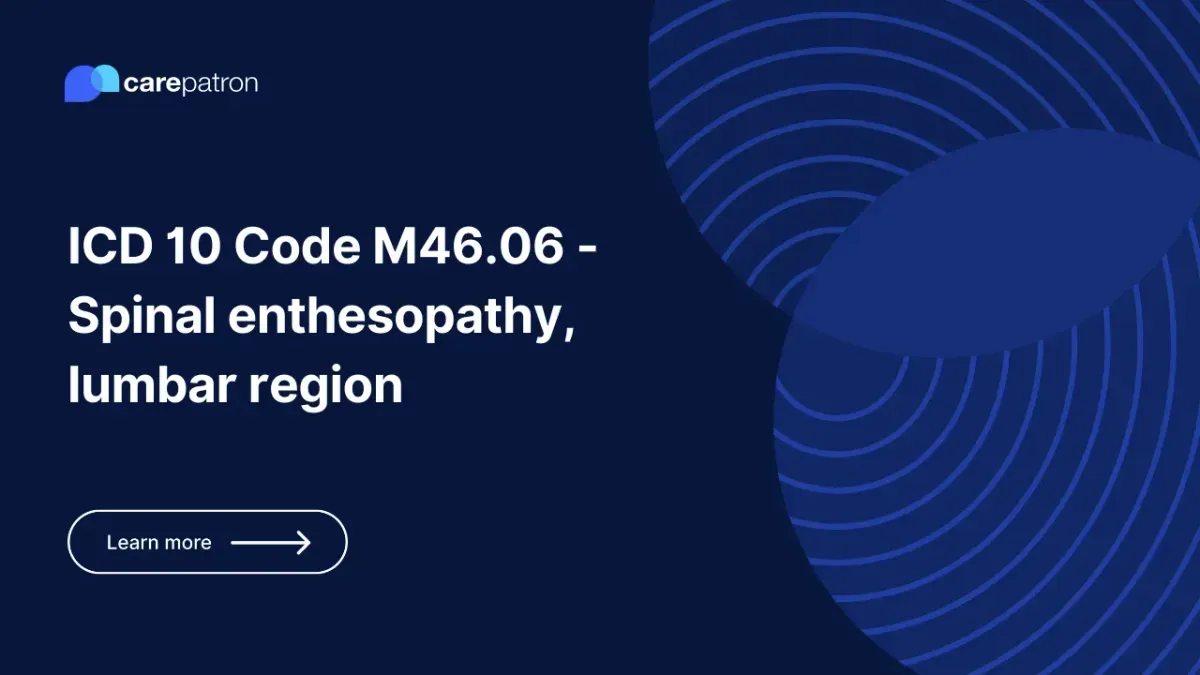
M46.06 – Spinal enthesopathy, lumbar region
M46.06 - Spinal enthesopathy in the lumbar region. Learn about this condition's symptoms, causes, and treatments. Find expert insights and guidance.
Use Code
Commonly asked questions
Spinal enthesopathy in the lumbar region is relatively common, especially among individuals who engage in repetitive activities or have underlying inflammatory conditions.
While a complete cure may not always be possible, proper management and treatment can significantly alleviate symptoms and improve the quality of life for individuals with spinal enthesopathy.
Conservative treatment options may include rest, physical therapy, pain medication, and lifestyle modifications. These measures aim to reduce inflammation, manage pain, and improve mobility.
EHR and practice management software
Get started for free
*No credit card required
Free
$0/usd
Unlimited clients
Telehealth
1GB of storage
Client portal text
Automated billing and online payments
